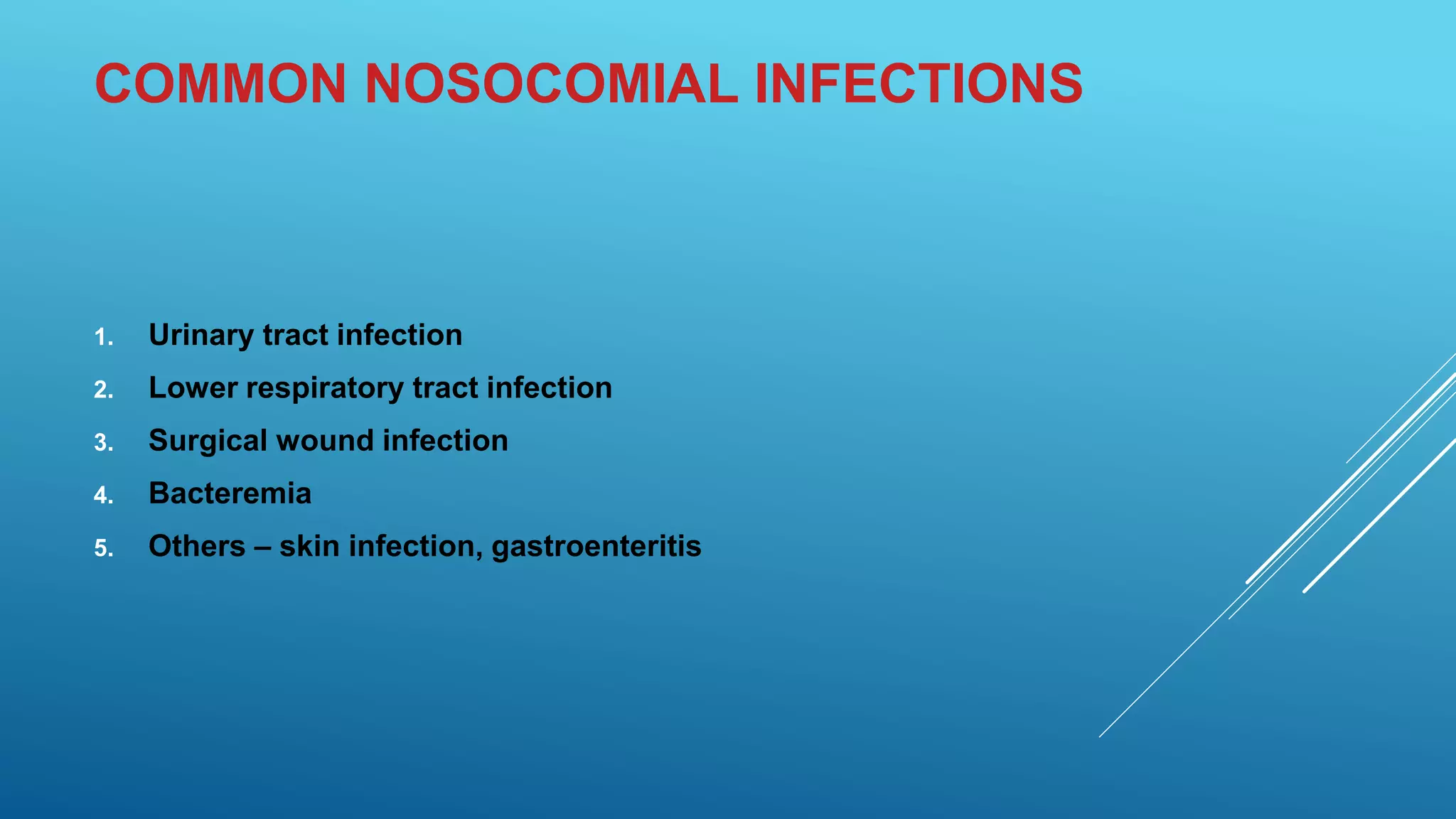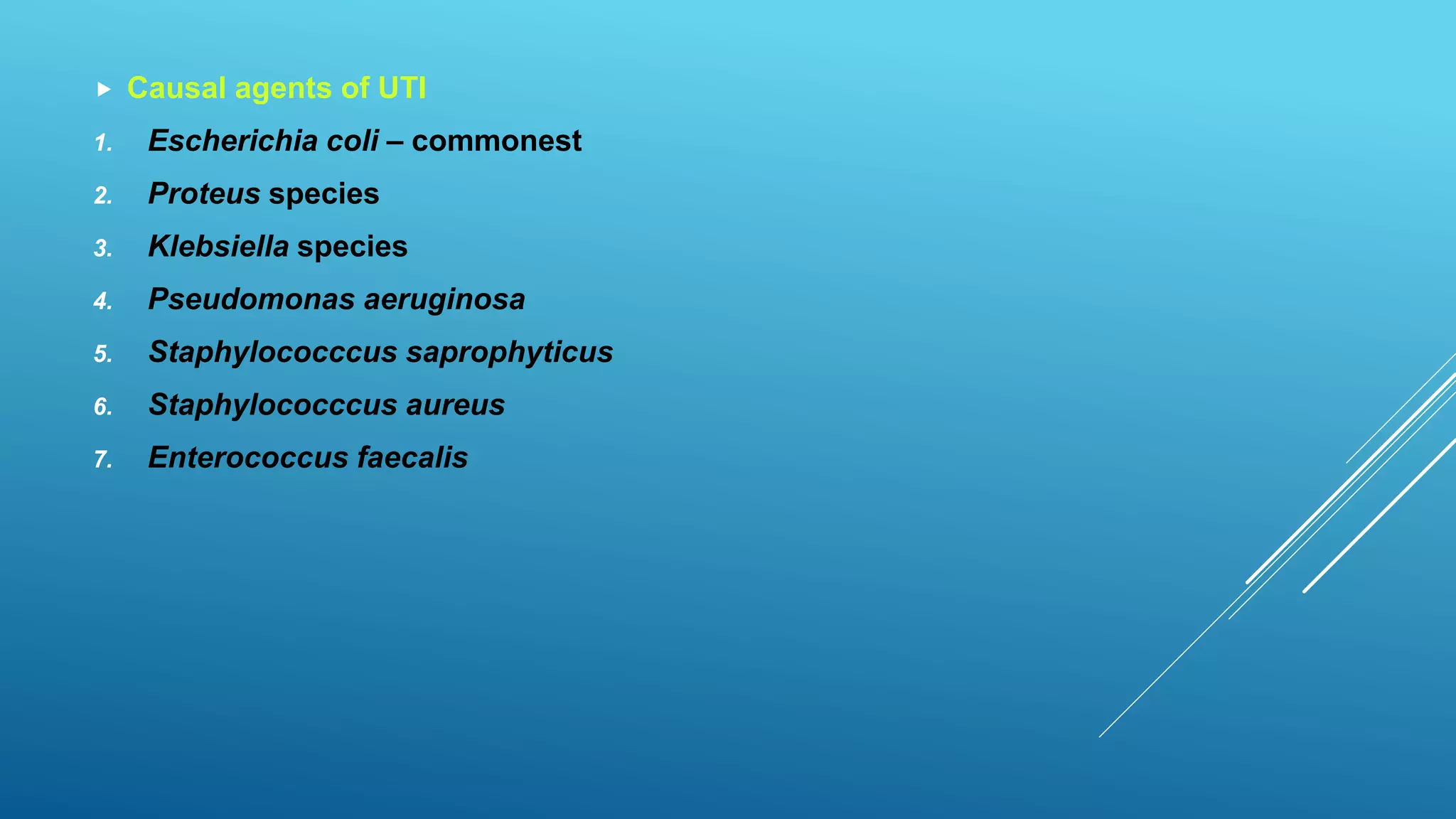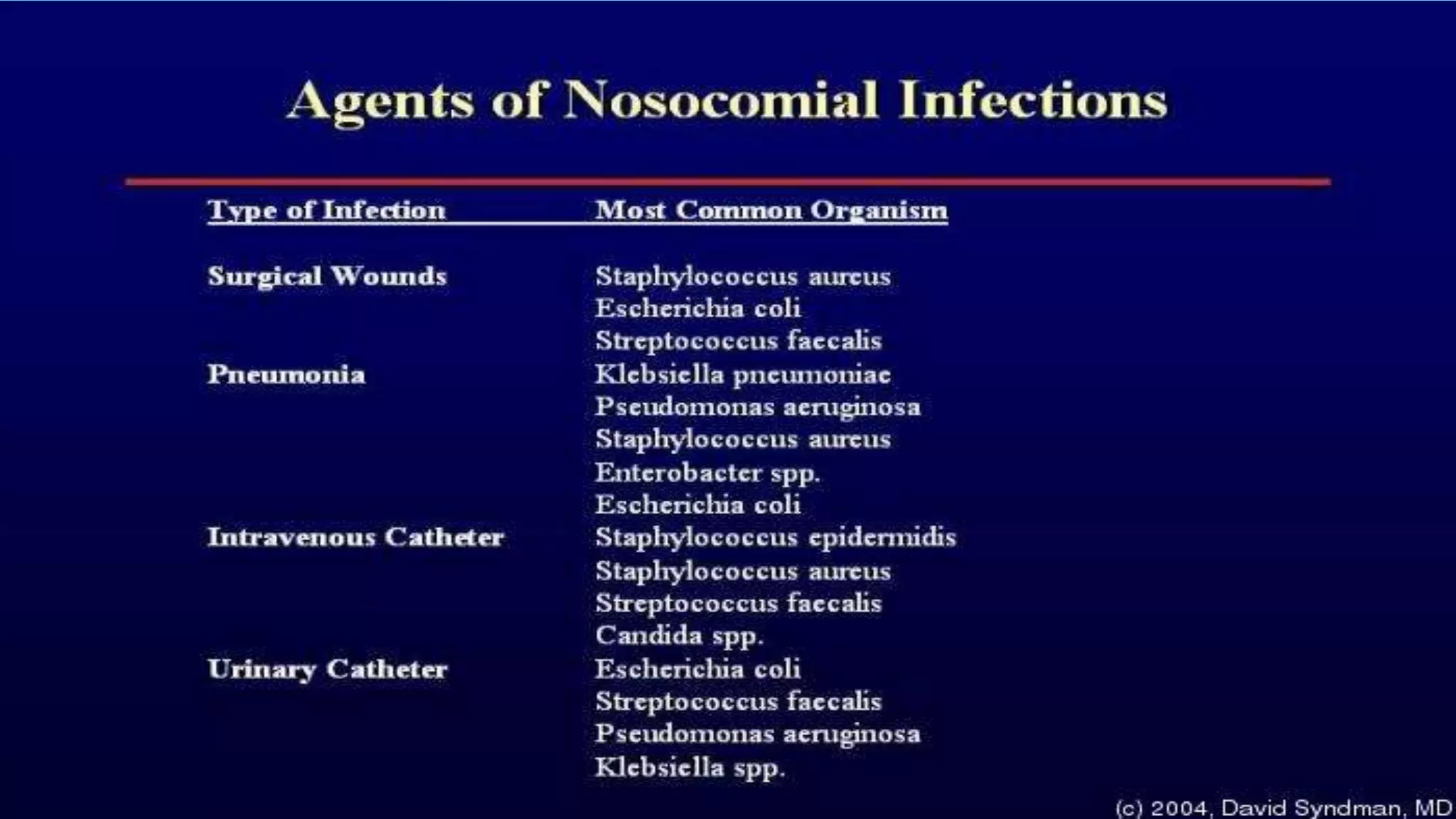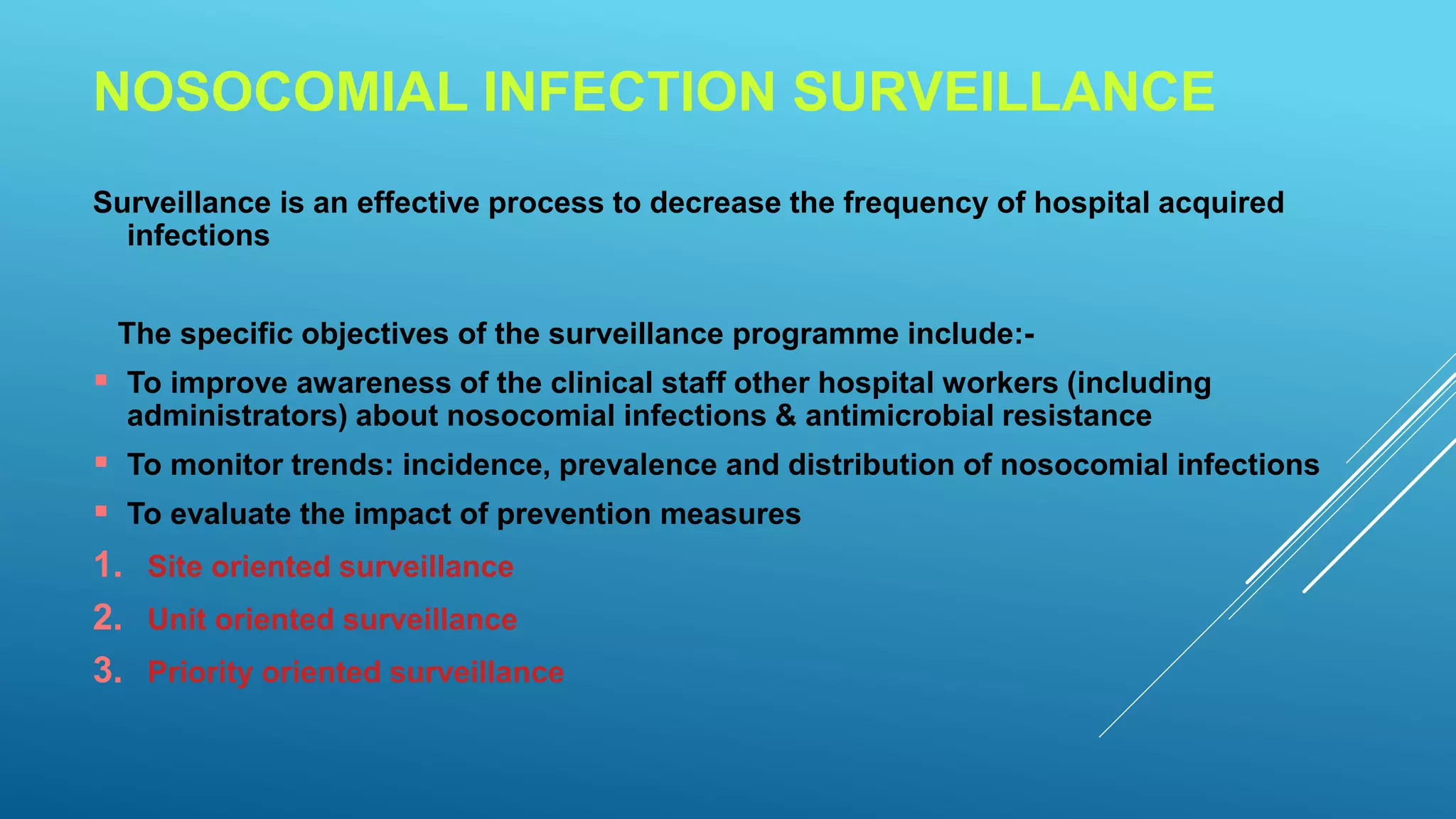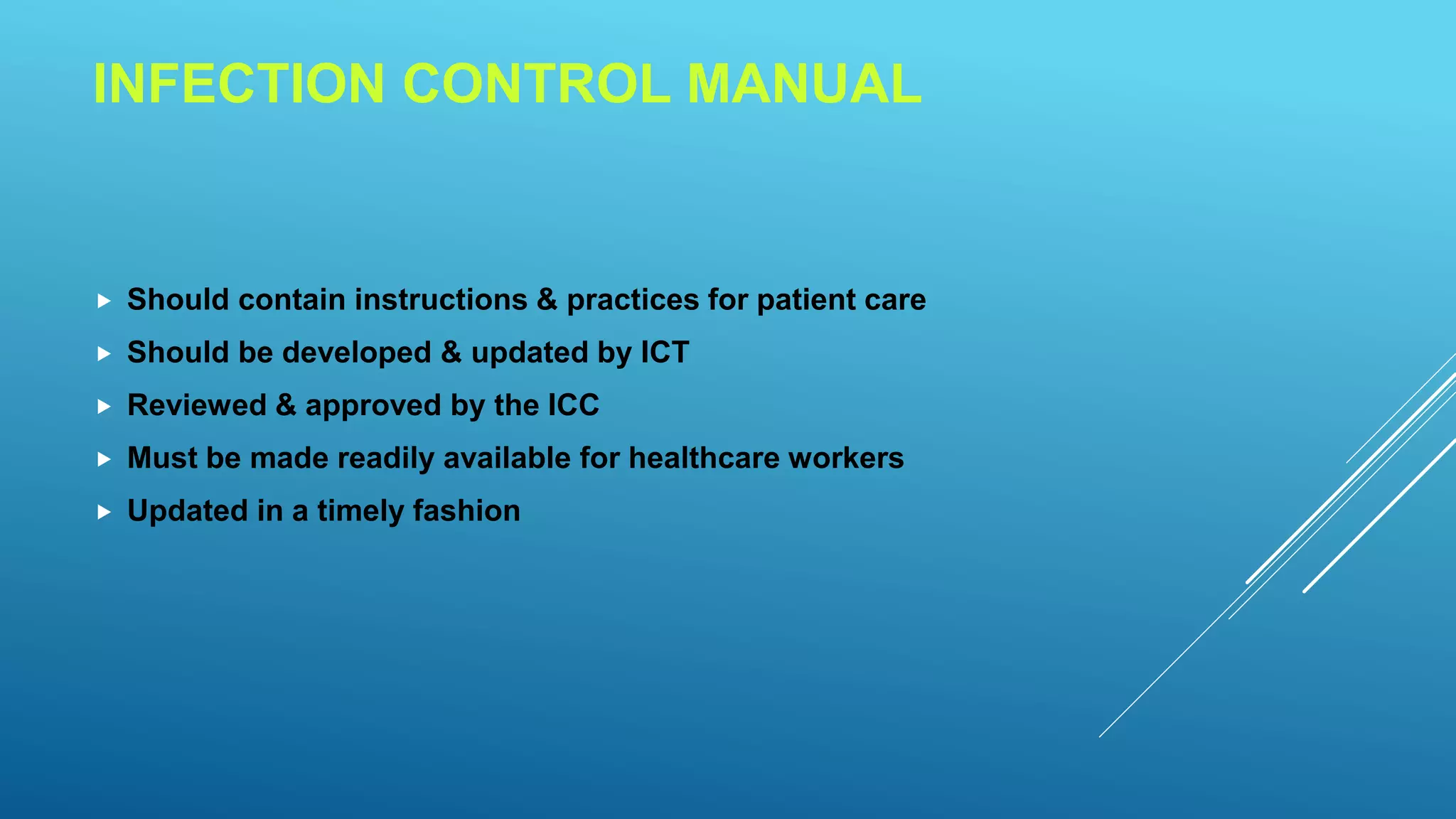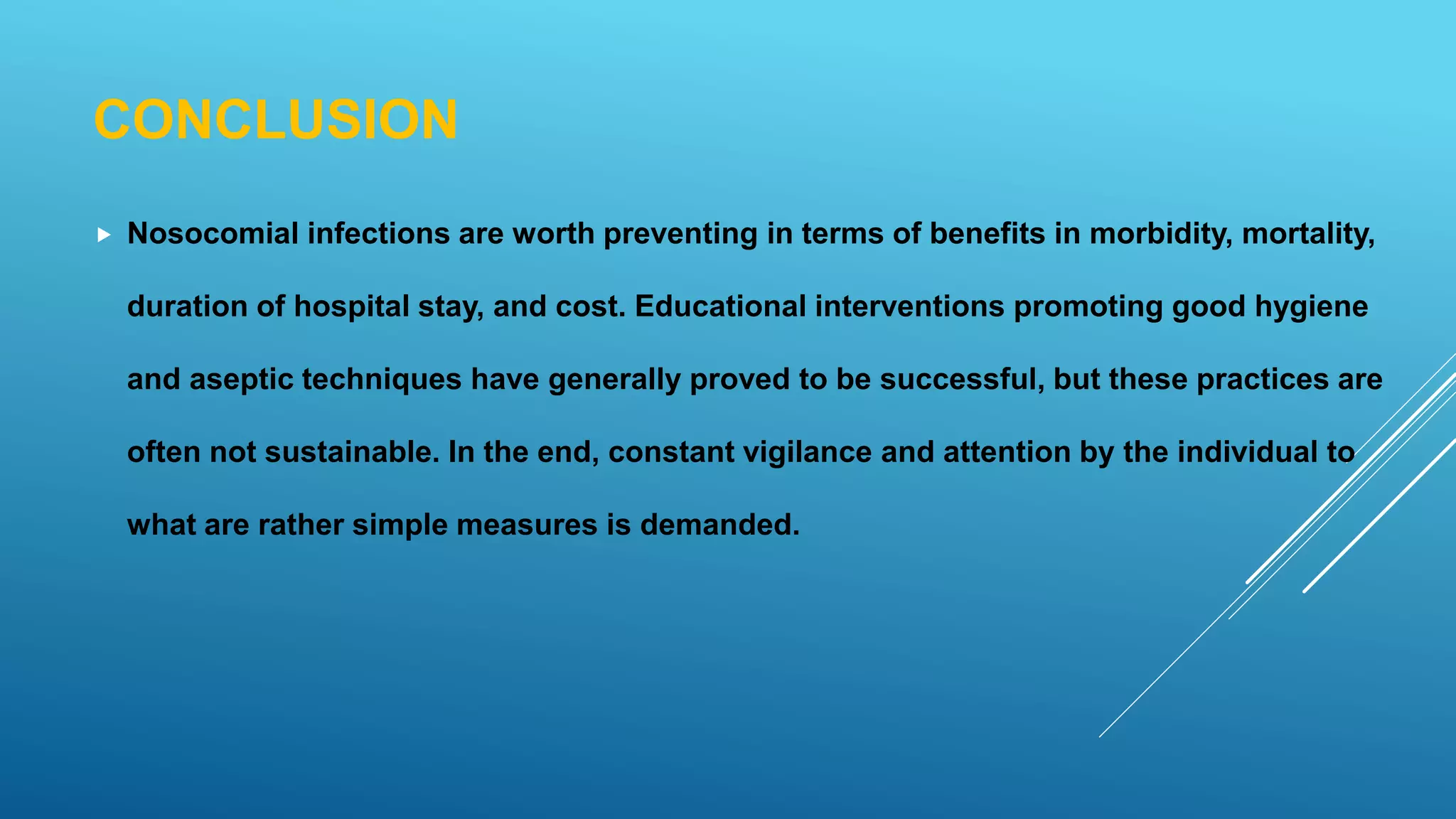Hospital acquired infections, also known as nosocomial infections, are infections that patients acquire during the course of receiving treatment for other conditions within a healthcare setting. These infections can spread through direct contact or indirectly through hands, equipment, and the environment. Standard precautions like proper hand hygiene and the use of personal protective equipment are important for preventing the transmission of infections between patients and staff. Additional precautions tailored to specific infection types may also be implemented, such as isolating patients, wearing protective masks, and limiting movement. Regular surveillance and adherence to infection control guidelines and manuals are necessary to effectively reduce hospital acquired infections.











